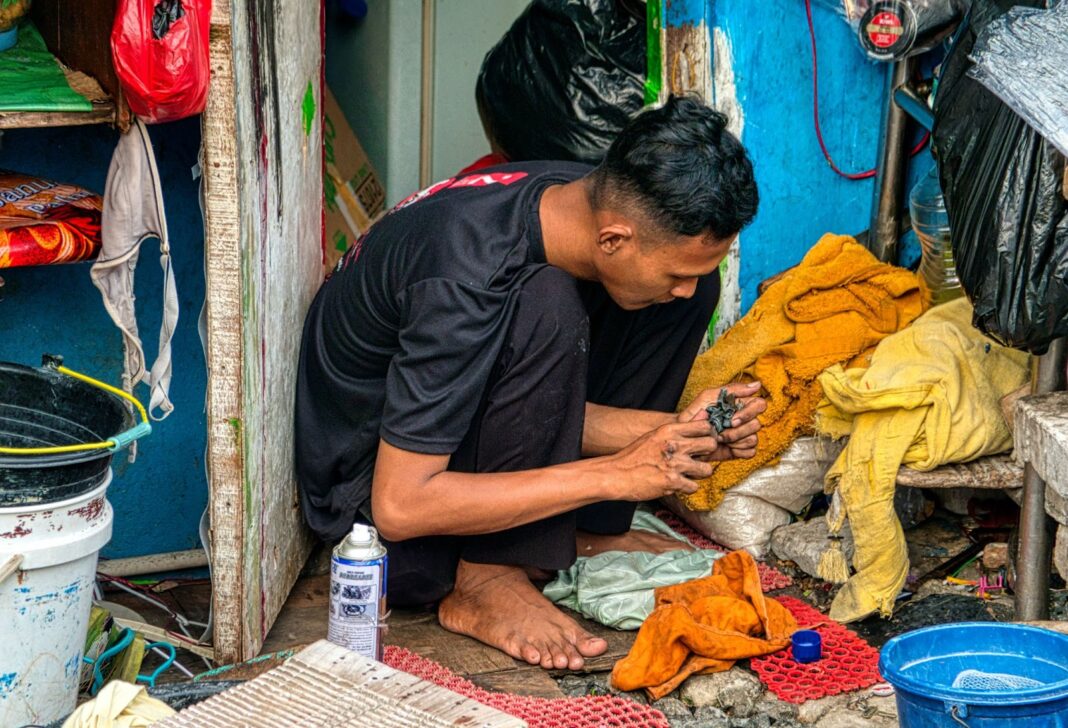The division of society into classes, where the wealthy are getting richer and the poor are starving to death, has made life more challenging.
It is distressing to see this predicament, which is why you must act right away because so many people are homeless, hungry, and lack educational opportunities.
Giving signifies a sense of obligation to contribute to the world’s welfare. It’s time to practice a little gratitude and accountability because, without responsibility, anyone can affect change in the world. You can keep talking about change and aiding the underprivileged, but words alone will not bring about change.
Understanding the Lens of Poverty
When a person consistently or repeatedly lacks the resources, abilities, opportunities, security, and power necessary to enjoy a minimal standard of living and other civil, economic, cultural, social, and political rights, that situation is known as poverty.
Poverty can be defined and assessed in several ways. In addition to diverse methods of gathering and analyzing statistical data, the variations in definitions and measurement also result in different strategies for eradicating poverty.
In all cases, there is a predetermined poverty level under which everyone who lives and fits into that category falls.
Situational Poverty
Situational poverty typically stems from an unexpected loss or disaster and is frequently fleeting. Environmental catastrophes, divorce, or severe health issues can all be the causes of this situation.
Generational Poverty
Families with at least two generations born into poverty typically experience generational poverty. Families in this kind of poverty lack the resources necessary to improve their circumstances.
Absolute Poverty
The absence of basic needs like a place to live, access to running water, and food is known as absolute poverty. Because they cannot buy even the most essentials, families living in absolute poverty, tend to concentrate on just getting by daily.
Relative Poverty
An individual or household belongs in a situation of relative poverty when their income and resources are lower than what is deemed sufficient or socially acceptable in the community in which they live.
Urban Poverty
In urban centers with a population of at least 50,000, urban poverty exists. Crowding, violence, and noise are just a few of the complex mixtures of acute and chronic stressors that the urban poor must contend with as they rely on frequently subpar large-city services.
Rural Poverty
Non-metropolitan rural areas with populations under 50,000 are where rural poverty exists. There are more single-guardian households in rural areas, and families frequently have limited access to resources, support for people with disabilities, and opportunities for a top-notch education.
Programs encouraging the transition from welfare to work offer challenges in remote rural regions with few employment opportunities.
The Various Impacts of Poverty
Nobody truly understands the effects of poverty until they have experienced it firsthand. Millions of people each year are stressed from trying to pay their expenses and feed their families.
Whatever the situation, poverty’s impact on the ability to lead a sustainable and healthy life can have long-lasting effects that include the following.
Poverty Effects on an Individual’s Growth
A newborn may not thrive and may be born with a low birth weight if a family has a financial hardship and lacks access to food, medicine, and other essentials throughout pregnancy.
A child may face slowed growth and recurrent illnesses as they enter the baby stage. During the toddler years, a child may stunt physical and mental development.
Children old enough to go to school may experience learning challenges or be unable to go. Poverty’s aftereffects can persist in a kid into adulthood, resulting in chronic sickness, a lack of education, or the inability to find employment.
Poverty Is More Than Just Starvation
More than merely skipping meals are the consequences of poverty. Families deal with ongoing hunger, malnutrition, and food instability. Families who lack food suffer in their well-being and ability to support themselves, which puts them in a downward spiral that impacts successive generations.
The only solution is to end poverty by helping poor people and creating robust communities, allowing everyone to access enough wholesome food for a long, fulfilling life.
Poverty Effects on Psychological Warfare
Poverty has many detrimental psychological repercussions. Children are more likely to experience emotional and behavioral issues. Intense anxiety, despair, and low self-esteem are some potential symptoms.
Stress and depression are two persistent symptoms of poverty that parents may experience. Married people may experience marital difficulties and behave more harshly as parents.
What Steps May Be Taken to Reduce Poverty?
Developing countries must sustain higher growth rates that benefit and involve the poor to decrease poverty permanently. Strategies for lowering poverty acknowledge that maintaining a nation’s assets is essential to fostering economic growth and eradicating poverty.
Here are some solutions for tackling how to help poor people and the causes of poverty while bringing about more radical transformation.
Equity
Inequality is one of the most fundamental contributors to poverty. Groups of individuals that lack representation in their communities experienced disadvantages in terms of resources and opportunities due to institutional constraints.
Communities must include all groups and identities in developing solutions or even a nation to fight poverty raise or it will affect everyone in the long run.
Resiliency
To counteract this, we must ensure that the most defenseless individuals and communities can develop resilience. Even though the meaning of that statement has evolved through time, it still has a particular connotation in terms of development and humanitarian relief.
Resilience entails collaborating with local communities to develop early catastrophe preparedness plans. Adapting to long-term changes is another aspect of it.
Solutions for Climate Change and Justice
Climate change resilience is particularly significant and deserving of separate discussion.
Governmental engagement in climate justice, particularly on the side of elevated nations whose energy consumption is higher than those of the low developing countries hit most by climate change, is one of the remedies to poverty beyond the humanitarian obligation.
Education
Education increases knowledge and capacities, addresses inequalities resulting from marginalization, and reduces susceptibility and risk.
Establishing access to schools in remote places and assisting teachers in their efforts can provide high-quality education. Ensuring that education is accessible to children living in fragile circumstances are a few critical areas of attention for ensuring that education is genuinely for all.
Ending Hunger and Thirst
Governments must provide the fundamental social safeguards and services to keep their citizens healthy and provide them with accessible medical options when they do not go hand in hand with this approach.
Enough food supply can break the cycle of poverty by simply eating three meals daily and consuming a healthy amount of nutrients and calories. A person lacks the power and energy necessary for the job when they don’t eat enough, while debilitating infections can result from contaminated water.
Peace
While ambitious, ending all war would allow funds set aside to cover the expense of fighting to be utilized to provide public services. Additionally, it lessens the risks that the most disadvantaged communities must confront and ensures that peace can uphold the objectives of inclusion and equality.
Financial Aid
Cash and microfinance are two of the best ways to combat poverty, even though they may appear like the most obvious options to answer the question ‘How to help poor people?’
When a family struggles to pay their bills and feed their kids, sometimes all it takes to help them create a new business is a little startup grant.
What Can You Personally Do to Improve the Situation of the Poor?
How to help poor people? It is usual for us to believe that there is nothing we can do to address the problem of poverty. Although such pessimism is natural, the reality is quite different.
While terrible and pervasive poverty exists, it is easy to overlook the enormous potential and number of efforts we have at our disposal that, when united, can bring about change.
Contest Beliefs and Presumptions
Whether you have preconceived thoughts about poverty in your neighborhood or as a concept in general, it’s critical to confront those beliefs to avoid unintentionally propagating detrimental biases.
For instance, a typical misunderstanding is that homeless people opt not to work. This falsehood is highly destructive because it downplays the numerous uncontrollable and systemic factors that might lead to poverty or housing instability.
Reach Out To Different Organizations
There are various non-profit organizations you can donate to, so choosing one to support can seem complex. The Food for Life Global partakes in several fundamental causes so you can help poor people effectively and with a purpose.
Consult organizations dedicated to systematically identifying the world’s most successful charities to avoid the potential traps of aid and be part of a donation to poor initiatives and assistance.
Raise Consciousness and Information
Every community experiences poverty; therefore, it’s critical to understand where the problems are on your own. To know how to help with poverty problems, find out which resources are most important and currently needed to address the issue.
You may contribute by spreading the news about these local organizations’ efforts and paying attention to these local experts when they discuss how you can aid the battle against poverty in your neighborhood.
Create Job Opportunities
Look for locations where your company or group in the community could use some assistance. The fact that many people in poverty may not have access to advanced education or specialized certificates does not imply that they lack the abilities necessary to contribute.
One method to effect change to assist neighbors living in poverty in your area is to broaden your recruiting pool, identify areas of opportunity within your business or group, and offer a decent wage.
Pay for Time Off and Sick Days of Employees
If you own a business in your neighborhood, provide paid time off and sick days. Even if it’s an investment for you, giving some of your employees the occasional day off without compensation can be detrimental, mainly if they are living in poverty.
To establish a climate where working families don’t have to pick between income and daycare, consider providing stipends for childcare for staff who make less than the region’s median salary. You might even think about introducing an on-site childcare option.
Get Involved!
Given that more people than you might think are affected by the national poverty crisis, it is easy to imagine that it is far beyond what you can eradicate.
However, there are a variety of actions you can take if you play your role and cooperate. As you now understand, your numerous efforts significantly impact the issue.
Volunteering your time and effort or donating money to help your community is a practical way to get involved. Reach us here at Food for Life Global immediately to find out how you can keep up the struggle against poverty in your neighborhood.
Being the global headquarters for a network of over 250 affiliate initiatives in 65 countries and as donations for poverty institutions, we have achieved astonishing and genuinely joyful achievements and success.

















